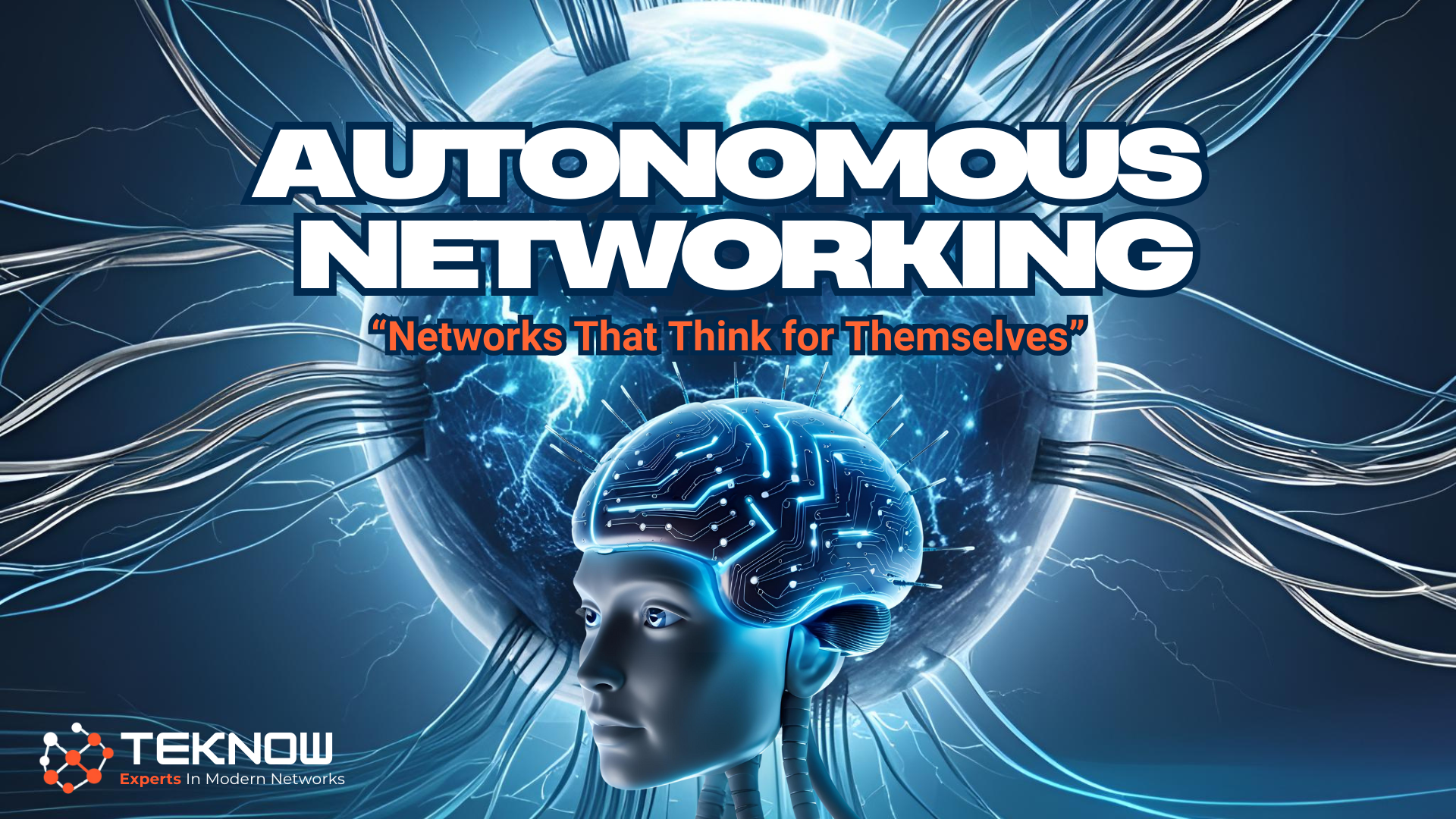
Autonomous Networking: Networks That Think for Themselves
Have you ever wished your network could just fix itself before anyone noticed a problem?
Welcome to the world of Autonomous Networking—where networks don’t just run, they think, adapt, and evolve with minimal human intervention.
In an era of rising complexity, cloud-first strategies, and always-on expectations, autonomous networks are reshaping the future of IT infrastructure—and they’re doing it faster than most organisations realise.
What Is Autonomous Networking?
Autonomous networking refers to the use of AI, machine learning, and automation to manage and optimise every aspect of the network lifecycle—without relying on constant human input.
At a high level, these networks can:
- Self-configure based on intent or business policies
- Self-monitor for anomalies and performance issues
- Self-heal by remediating faults automatically
- Self-optimise to ensure consistent quality of experience
Think of it like going from a manually flown aircraft to an AI-powered autopilot that can reroute, refuel, and land itself based on real-time conditions.
Why Should Business Leaders Care?
Networks are the backbone of digital business. But with growing cloud complexity, hybrid workforces, and cyber threats, traditional network operations (NetOps) simply can’t keep up.
✅ Here’s what autonomous networking unlocks for businesses:
- Faster Time to Resolution
AI-driven root cause analysis detects and fixes issues—sometimes before users are even affected.
- Lower Operational Costs
By automating repetitive and time-consuming tasks, IT teams can focus on strategy rather than firefighting.
- Fewer Human Errors
Automated updates and config management reduce the chance of costly outages caused by manual mistakes.
- Scalability on Demand
Need to scale across clouds, branches, or geographies? Autonomous networks adapt in real-time, no manual rewiring required.
- Better User Experience
These networks continually analyse performance and optimise routing, ensuring smooth experiences for users and apps.
Real-World Use Cases
Autonomous networking is already delivering value across industries:
- Retail: Dynamically prioritising point-of-sale traffic during high demand, adjusting bandwidth on the fly.
- Healthcare: Ensuring critical applications for patient care receive uninterrupted, secure connectivity—no manual tuning required.
- Finance: Detecting anomalies in encrypted traffic and triggering real-time mitigations without disrupting transactions.
- Remote Workforces: Using AI to optimise VPN performance and secure access based on contextual data (location, device, behaviour).
To us, these aren’t just technical wins—they’re business enablers.
What’s Holding Businesses Back?
While the benefits are clear, adoption can still be slow. Here’s why:
- ❌ Lack of understanding around AI and network data
- ❌ Fear of losing control to automation
- ❌ Legacy infrastructure not built for autonomy
- ❌ Skill gaps in AI and data-driven network tools
- ❌ No defined strategy for transformation
That said, none of these barriers are permanent. They just require the right strategy—and the right partner.
Leading Vendors in Autonomous Networking
Several vendors are leading the charge in delivering intelligent, self-managing network solutions:
- Cisco DNA Center & Catalyst Center – AI-powered insights and automation for campus, branch, and SD-WAN
- Juniper Mist AI – AI-driven operations and user experience monitoring for wired/wireless networks
- HPE Aruba Central & ESP (Edge Services Platform) – Unified AIOps for network, security, and location services
- VMware VeloCloud & NSX – Intent-based networking and smart routing with integration into cloud-native workloads
- Fortinet AIOps – Applied across secure SD-WAN and network security
- Nokia’s Deepfield & Nuage – Telecom-focused network intelligence and automation
- Google Cloud Network Intelligence Center – AI-driven insights into cloud networking performance and security
Getting Started: A Phased Approach
If you’re not ready to go fully autonomous—don’t worry. Most organisations start small:
- Enable Real-Time Telemetry
Start collecting performance and usage data across your environment. - Introduce Network Automation
Automate routine tasks like config backups, patching, or QoS adjustments. - Adopt AI/ML for Analytics
Use machine learning to spot anomalies, forecast demand, and fine-tune policies. - Pilot AIOps Platforms
Evaluate tools like Cisco DNA, Juniper Mist, or Aruba ESP in a test environment. - Partner with Experts
Teknow helps you assess readiness, build a roadmap, and implement smart network solutions that evolve with your needs.
Final Thoughts
Autonomous networking isn’t about removing humans from the loop—it’s about amplifying what your team can do.
In a world where every second of downtime costs money, and every delay in deployment means lost opportunity, intelligent networks are no longer optional—they’re strategic.
If you’re ready to shift from reactive to proactive network operations, now is the time to explore autonomous networking.
Let’s build a network that thinks for itself—so your business can think bigger.
#AutonomousNetworking #AIOps #NetworkAutomation #AIinNetworking #DigitalTransformation #ModernNetworking #MistAI #CiscoDNA #Teknow #NetworkOps #SelfHealingNetworks #BusinessAgility

